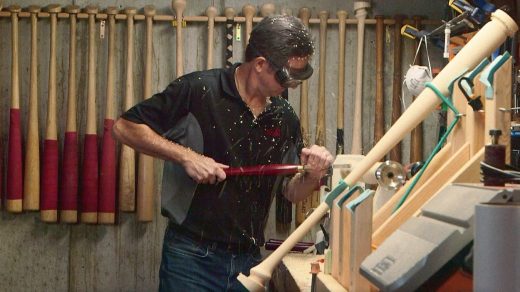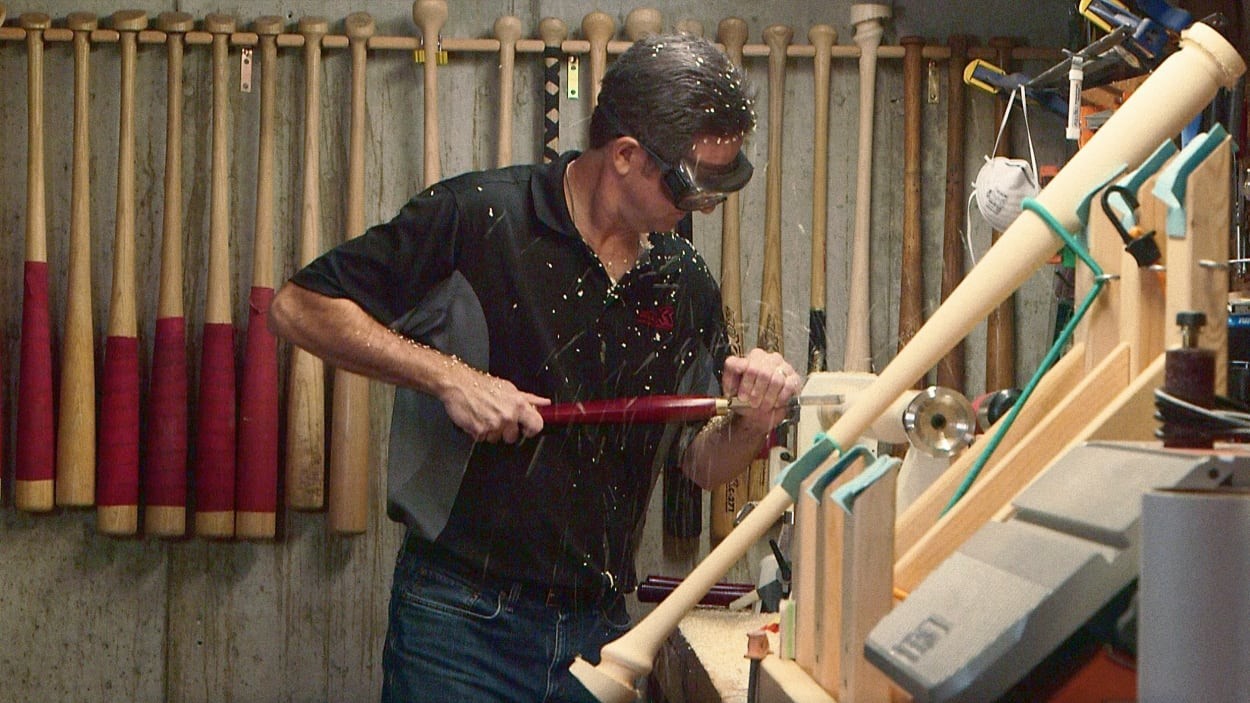A backyard accident led this dad to design a new bat that is changing Major League Baseball
It’s been a season of change in Major League Baseball. The games are faster, the bases are bigger, and for the first time in history, all 30 teams will play each other in a season. The changes themselves are small, but they represent seismic shifts compared to previous years—decades, even—in which the establishment has been notoriously resistant to change, tied more to its history than to innovation.
Now, one seemingly innocuous foul ball and a few sluggers having success swinging a new stick could be tipping points toward yet another change.
On July 3, Los Angeles Angels star Mike Trout, arguably the greatest player of the last decade, took a routine swing against the San Diego Padres’ Nick Martinez, fouling off the 0–1 pitch. As he gripped the bat and prepared to step back into the box, Trout winced, turning to the dugout and calling for the trainer.
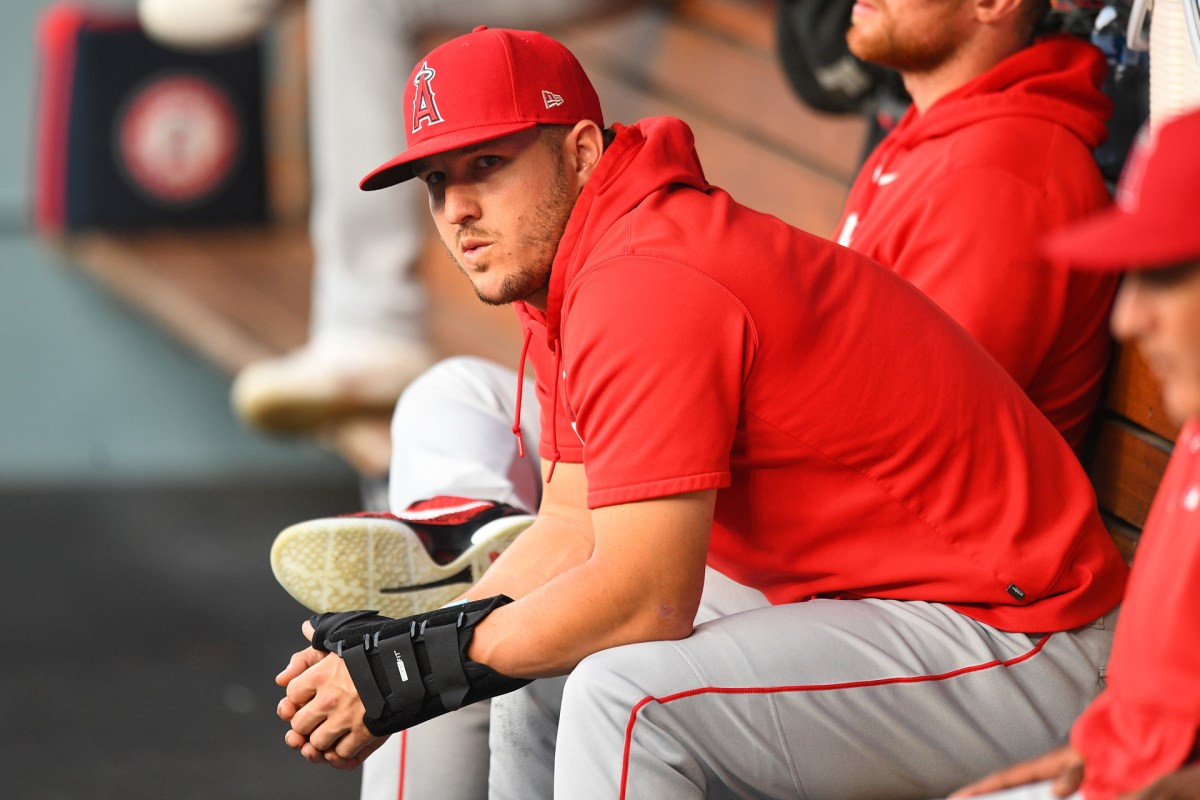
Trout left the game and later underwent surgery for a broken hand, specifically a fractured hamate bone in his left wrist. He’s played in only one game since.
“I just took a swing and something felt uncomfortable,” Trout told reporters after the game. “I can’t really describe the pain I felt. Never felt it before, ever. I’ve never had wrist problems or anything. Just a freak thing, I guess.”
A freak thing?
Not if you ask Grady Phelan, an unlikely bat designer and grip guru who has designed a more ergonomic bat handle with an angled knob that significantly decreases the likelihood of Trout’s all-too-common injury.
Which begs the question: If a solution exists, why are more players not using it?
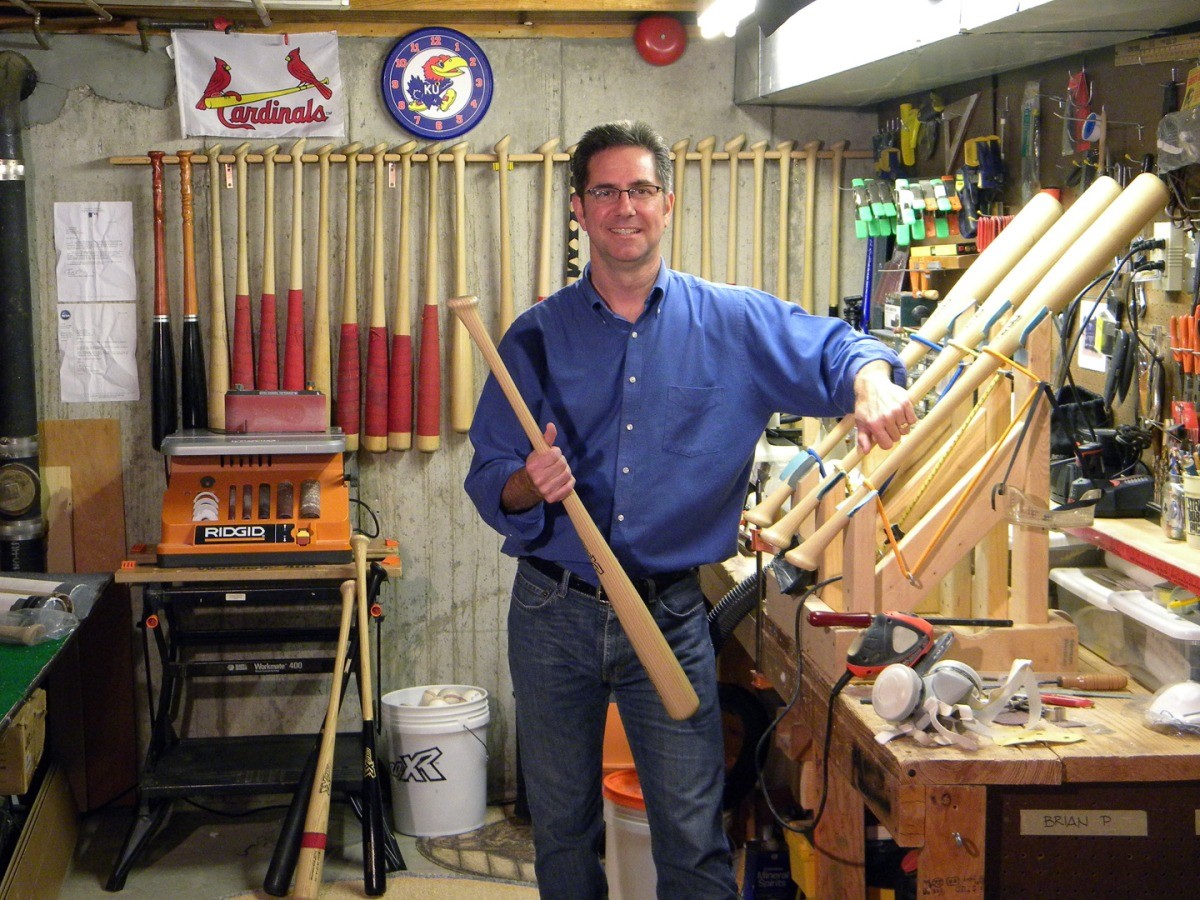
An Accidental Innovation, a Sudden Obsession
Phelan, a lifelong ballplayer and a graphic designer by trade, first began examining bat grips after an incident while playing with his son in their backyard.
“I accidentally threw the bat,” he says. “Nearly hit my son in the face—it helicoptered right past his head. And I’m plenty strong enough to hold onto a baseball bat; so the question became, ‘How did I throw this bat, and how can I fix it?’”
He took note of the bruise on his right wrist (he’s left-handed), created by the knob of the bat as it dug into his palm. He then spent months studying the anatomy of the hand—learning that when the base hand gripping a traditional bat rolls over the knob, it creates a speed bump effect that interrupts the ulnar-nerve connection, which helps you move your forearm, hand, and certain fingers. This interruption weakens the grip of the ring and pinky fingers, which can cause a hitter to lose the grip and throw the bat. And the part of the hand that takes the brunt of the impact from hitting this speed bump is the hamate bone.
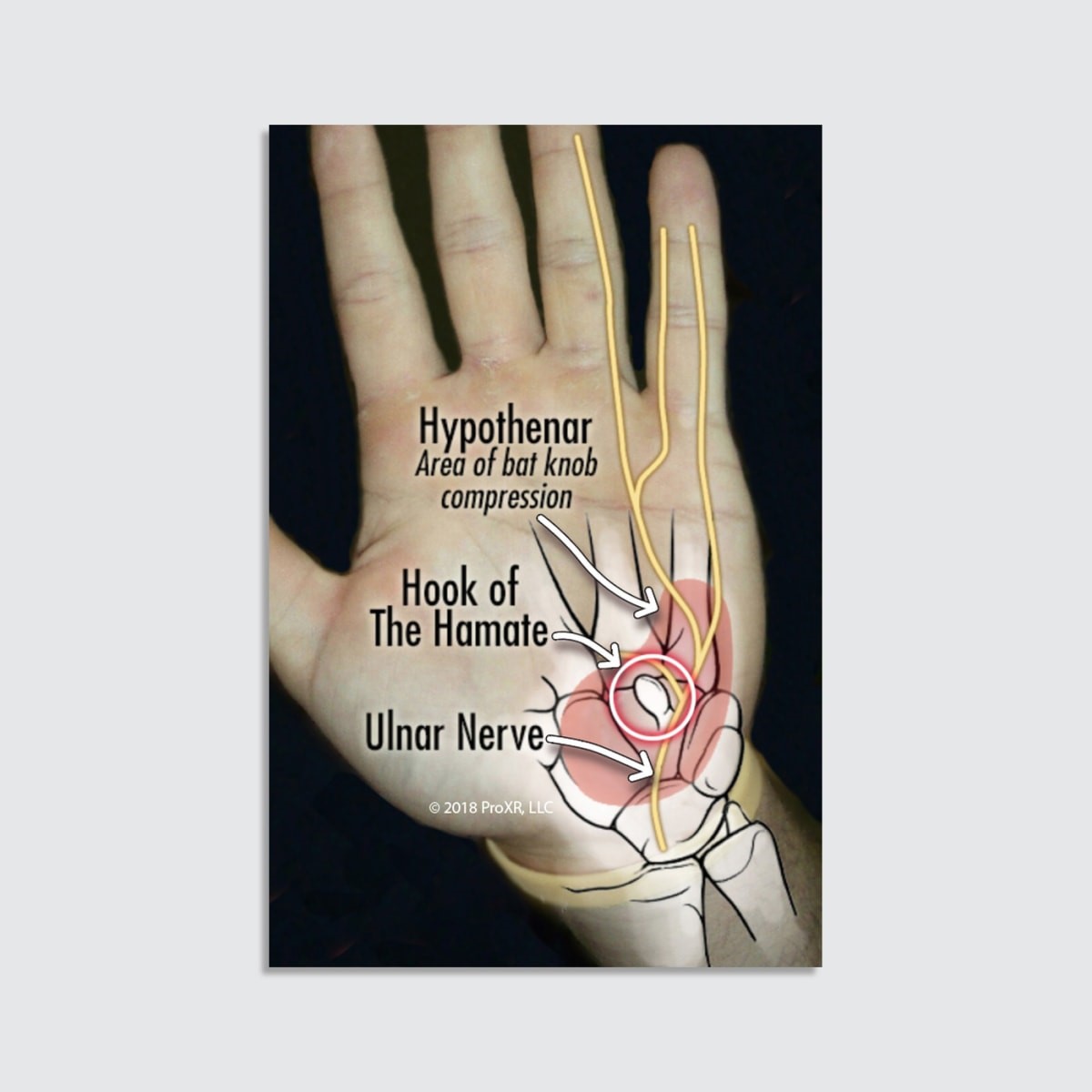
After anatomy class came the design phase: building a bat that could eliminate this friction for a smoother swing. Phelan conducted experiments at the Washington University School of Medicine’s Biometrics Lab, using compression sensors to measure impact intensity from swings with various handle designs. After countless iterations, including using 3D technology to cut a custom grip into the handle of a maple bat, the simplest solution proved the most effective: an angled knob.
Dubbed the ProXR, Phelan’s patented handle features a knob that is tilted 23 degrees, an angle that matches the human wrist’s range of motion, reducing the stress on the hamate bone by 25% and thereby minimizing the risk of hamate fractures like the one Trout suffered in July.
“When you grip a bat with a conventional knob, it feels comfortable,” says Phelan. But as you swing and that hands turn over, you have to go over the ‘speed bump.’ With the ProXR, we’re actually going right through it, so more of your hand is engaged with the bat. It’s a cleaner turnover and a smoother swing.”
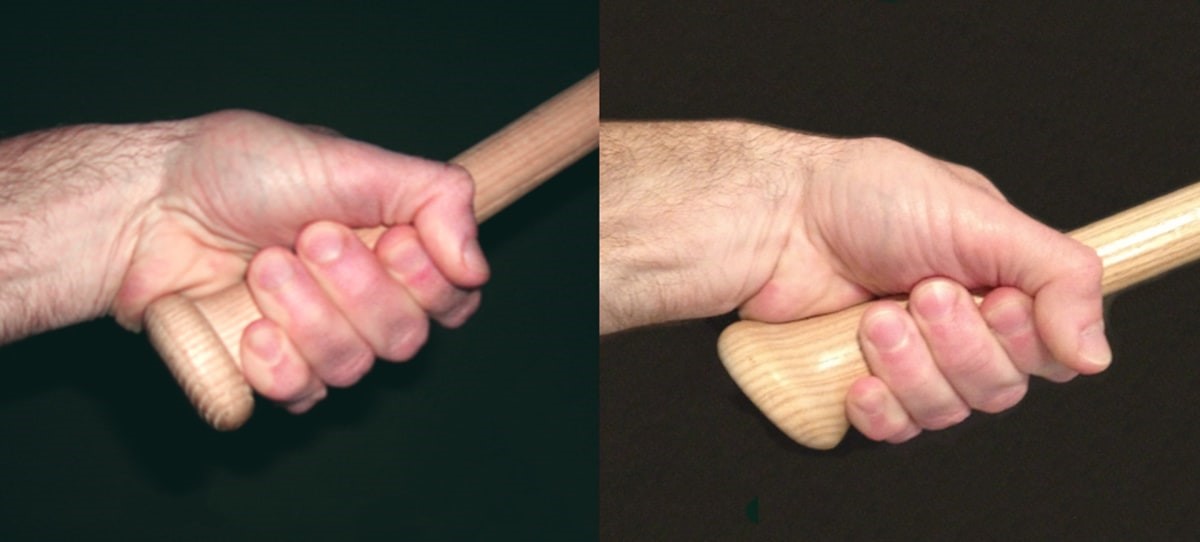
Phelan had solved a big problem for Major League Baseball. That was in 2006.
He spent the next 15 years trying to get the baseball world to acknowledge it.
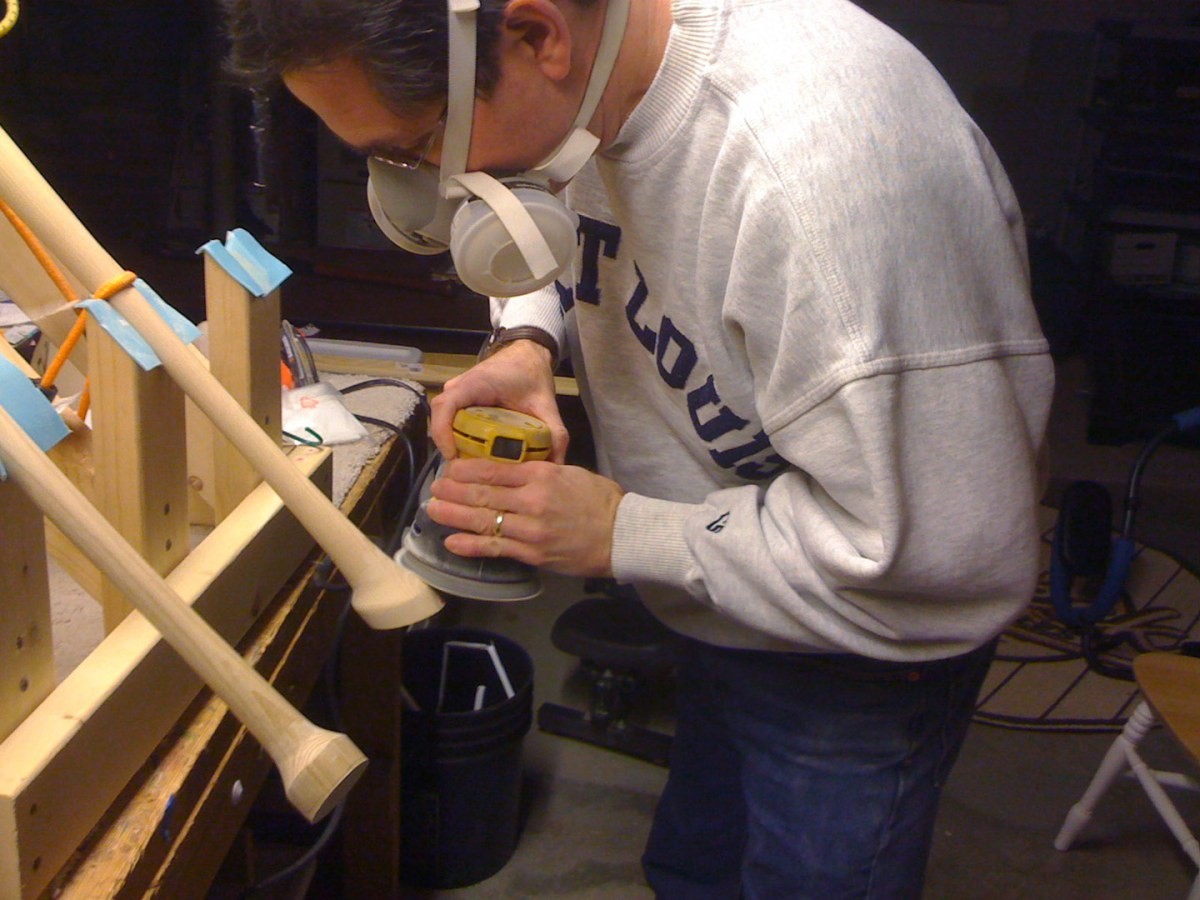
Getting Bat Manufacturers on Board
A key hurdle for Phelan and the ProXR was—and still is—that players aren’t just wary of trying new bats, they’re also stubbornly brand-loyal. And with the ability to customize a player’s bat based on wood, weight, color, and more, once a player finds a brand he likes, there’s rarely a reason to ever switch.
Generally, a handful of big bat makers dominate the league. Since 2019, Marucci and Victus (owned by Marucci) have made up 50% of the MLB market. A study by Bat Digest showed that on opening day this year, 24% of MLB players swung Marucci bats, 23% used Victus, and the Louisville Slugger brand came in third at 15%. With Chandler and Old Hickory brands coming in at around 10% each, that left the other 29 of the 34 total MLB-approved bat manufacturers fighting for less than 20% of the market share.
So, for the ProXR to gain momentum, Phelan would either have to land a big bat manufacturer or a series of smaller ones to license his invention.
Over the years, Phelan has pitched the concept to bat-making giants. In 2006, he brought it to Rawlings, his hometown bat maker in St. Louis, and later to Louisville Slugger. Both ultimately passed.
“They looked at me, like, ‘We can’t make that,’” Phelan says.
He has a theory on why.
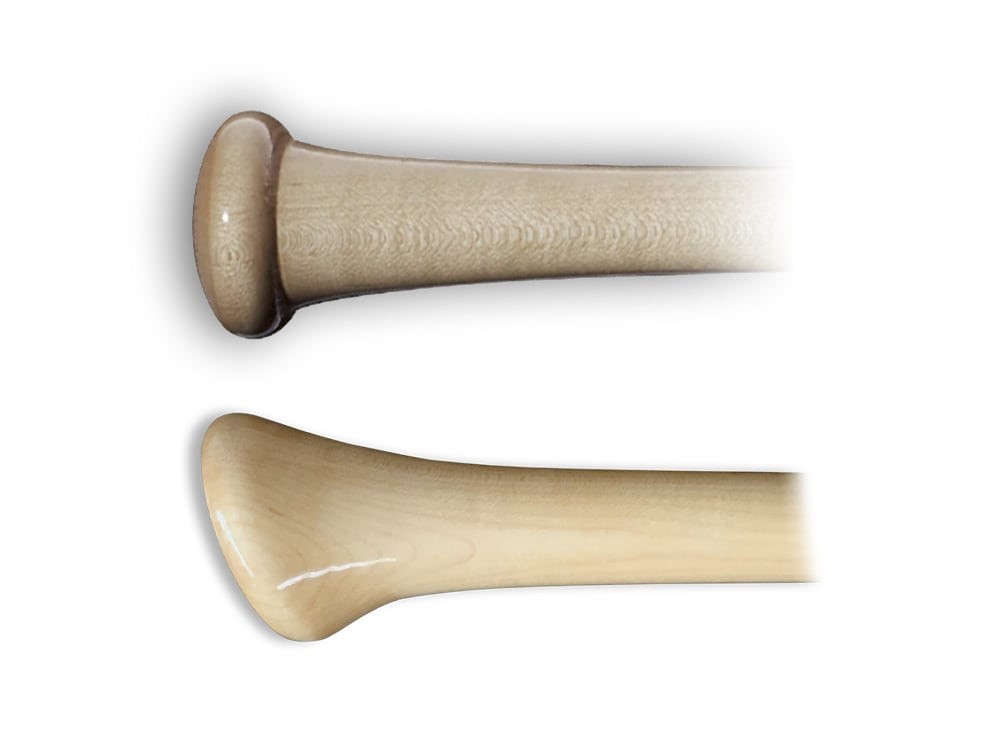
A traditional bat with a standard knob is axially symmetric, so it can be made on a lathe, which spins the wood on an axis while it’s shaped. The tilted knob of the ProXR, however, cannot be made on a lathe, so a mass-producing bat maker would have to develop new technology to make the bats, or shape them by hand. Add to that the fact that larger companies have their own product development teams and only license externally developed designs in the face of undeniable demand, Phelan says, and he learned quickly that his journey would be an uphill battle.
He told anybody who would listen about his innovation until he finally found one bat maker willing and able to produce the ProXR: a boutique Wisconsin-based outfit called RockBats.
“They had 1940’s technology that allowed them to make asymmetric handles,” says Phelan. “I got connected with someone at RockBats through people I’d met throughout my journey. It was just persistence and luck.”
But it wasn’t just production that bat makers initially balked at.
“They told me Major League Baseball would never approve it,” says Phelan. “They’re never going to approve it, they said, and you’re never going to get a player to use it because it’s so weird.”
Challenge accepted.
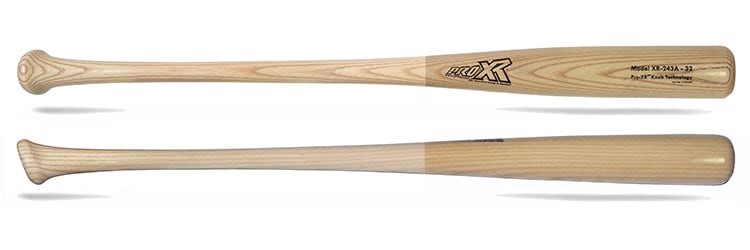
A Smooth, Round Stick
In 2006, shortly after securing his first patent, Phelan began contacting Major League Baseball, eventually connecting with then-MLB senior director of baseball operations, Roy Krasik. They discussed the broken-hamate-bone problem facing MLB and the thrown-bat issue. “I have a solution,” Phelan said, and he sent three ProXR prototypes to Krasik’s office. He received an email back almost immediately.
“I don’t think we’re going to approve this,” Krasik said, according to Phelan. “It’s not legal because it’s not round.”
Krasik was referencing then-Rule 1.10 in the MLB rule book, which states that a bat must be “a smooth, round stick.” Phelan wrote back, stressing that the bat was in fact round, petitioning Krasik to put it on his desk and roll it.
“The rule book says a bat must be round,” Phelan reiterated. “It doesn’t say anything about being symmetrical.”
“I remember sitting in my car dropping my son off at middle school,” Phelan continues, “and I got a call from Roy Krasik. He said, ‘Yeah, it rolls on my desk, so I guess it’s round. It’s approved.”
The ProXR was approved by the NCAA shortly thereafter, and today has seven manufacturing partners, including Old Hickory and Dove Tail Bats, with more in the pipeline. But the bat manufacturers were just one domino that had to fall for the ProXR to truly gain momentum.
The other—and the most crucial—was the players themselves.
“Baseball players are very suspicious,” says Paul Lancisi, founder of Dove Tail Bats. “You always get the guys who are like, ‘Oh man, this [knob] feels weird!’ And yeah, it feels weird. But if I handed you a regular knob after you grew up swinging a ProXR, you’d say, that feels weird, right?”
“But we believe in it,” he adds. “And I think the more players use it, the more they’ll believe in it, too.”
Breaking Into the Big Leagues
September 2010, more than four years after the ProXR was patented and approved by MLB: Phelan, through what he calls a stroke of luck, was at batting practice at Wrigley Field in Chicago. The New York Mets were in town. Josh Thole was the Mets’ catcher at the time, and also the cousin of Phelan’s neighbor back in St. Louis. The neighbor had connected them, and Phelan had a couple of maple bats with ProXR knobs for Thole to try out.
Thole liked the bat but was reluctant to use it in the game. He did, however, let a teammate, Mike Hessman, borrow it for batting practice. A late-season call-up, Hessman was a career minor leaguer, famous for being the all-time minor league home-run king. He liked the way the bat felt, and that day, using the ProXR, Hessman belted a stand-up double off the centerfield wall at Wrigley Field.
It was the ProXR’s first big-league hit.
That bat—which is now in the Baseball Hall of Fame—could have been the start of something big. It could have been ProXR’s introduction into baseball lore.
Instead, Hessman went on to play in Japan, then back to the minors, and Phelan was back to square one with a prototype and nobody to swing it.
Selling the Players
Trout isn’t the first superstar to suffer a broken hamate bone. Hundreds of MLB players have experienced this injury over the years, including Ken Griffey Jr., David Ortiz, Dustin Pedroia, and Giancarlo Stanton. The need for a solution is clear. But getting players to believe in the ProXR means not only proving that it can prevent injury, but that it can actually improve grip strength and comfort, smoothing out a player’s swing and resulting in greater control of the bat through the zone. After all, performance is the great equalizer. Tradition be damned—if a bat helps a player hit the ball harder and more often, he’ll use it.
More Major League players are swinging the ProXR today than ever before. On any given night, as many as 30 MLB players have it in their bag.
Few bigger than the Mets’ Pete Alonso.
Alonso burst onto the MLB scene in 2019, winning Rookie of the Year and leading the league in home runs with 53, a rookie record. That offseason, Lancisi introduced Alonso, a Dove Tail Bats devotee, to the ProXR. He began using it during the pandemic-shortened 2020 season, in which he recorded the highest maximum exit velocity—the speed at which the baseball comes off a player’s bat—of all major league hitters, at 118.4 miles per hour.

In an era of advanced stats and sabermetrics, exit velocity is a key indicator, as a higher exit velocity generally increases the likelihood of a hit or home run. Phelan says that in his studies and trials, he’s typically seen a three-to-eight MPH increase in exit velocity with the ProXR versus conventional knobs and handles. The in-game stats back this up. Before Alonso, over the course of the 2018 and 2019 seasons, every MLB player who swung bats featuring the ProXR knob delivered their highest career exit velocity in games. Alonso simply carried the torch into 2020, and has ever since— winning the Home Run Derby in 2021 with a ProXR bat, and currently ranking second among MLB players with 44 home runs in 2023.
But perhaps the most interesting ProXR story is the case of Harrison Bader. In 2022, Bader hit .256 with 21 RBIs in 72 games with the St. Louis Cardinals, hitting 5 home runs in almost 300 at-bats during that span. Traded to the Yankees during the summer, Bader spent time on the Injured List, debuting for the Yankees late in the season and putting up mediocre numbers down the stretch.
While in New York, Bader reconnected with an old college teammate from the University of Florida—Pete Alonso—who gave him one of his ProXR bats. Bader liked the feel, used it in the playoffs, and went on to lead the Yankees in postseason batting average (.333), hitting 5 home runs in 30 at-bats, by far his best stretch of the season.
“He got the bat five days before the playoffs started,” says Phelan. “And he was suddenly locked in.”
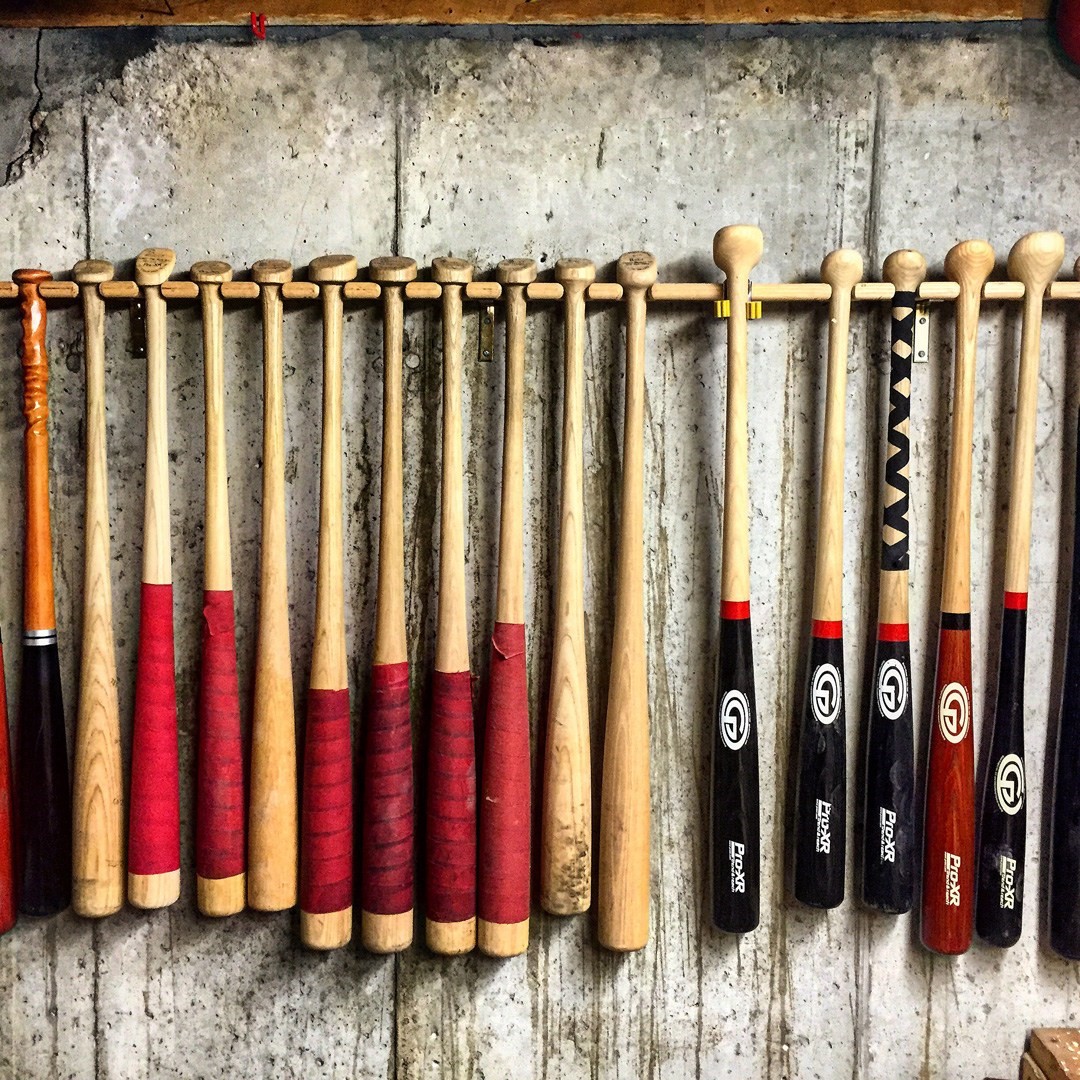
Cultivating a Movement
Phelan travels to Spring Training each year to evangelize the ProXR, hoping to ignite a grassroots movement. This past offseason, he met Bader at Yankees camp in Tampa, Florida. Bader’s locker was next to Giancarlo Stanton’s, a power hitter who had suffered a broken hamate bone in 2015. Phelan knew this and approached Stanton.
“He showed me his scar,” says Phelan.
They talked swing mechanics, Phelan explained the science behind the ProXR, and Stanton asked if he could have the knob made on his bat.
Before Phelan left Tampa, Stanton was swinging a ProXR.
A few weeks later, in just the third game of the regular season, Stanton blasted a 485-foot home run, the third-longest in Yankee Stadium history.
And he did it with a ProXR bat.
Does this mean that if you switch to a ProXR bat, you’ll suddenly be Giancarlo Stanton or Pete Alonso? Hardly. But as Phelan explains, in addition to helping prevent hamate bone injuries, his bat can also provide a little more pop.
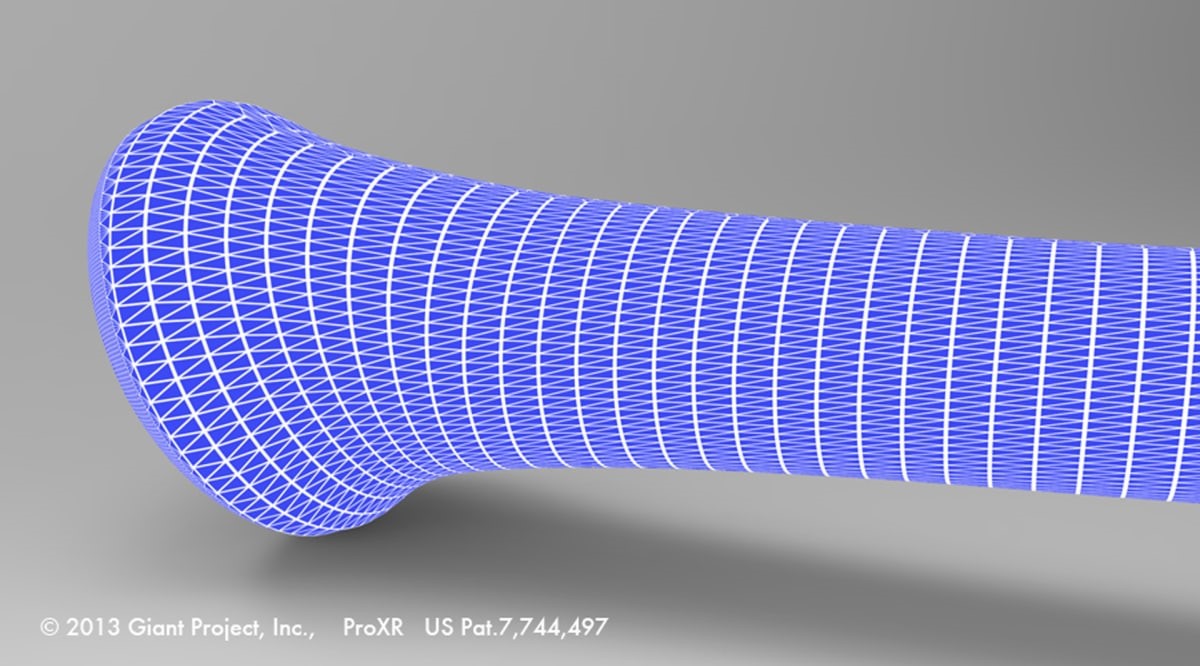
“As a hitter, you’re connected to the ground,” he says. “Your feet are connected to the ground, you’re shifting your weight, you’re pivoting your hips and driving from your back foot. So this whole sequence and this whole transfer of power from the ground to making contact—it has to go through your hands. And this angled knob eliminates that ‘speed bump’ effect of the traditional knob, offering the smoothest transition of power from ground to contact.”
The players who use it agree, saying that, like most things swing-related, it all comes down to feel.
“If it feels good,” says Cardinals right-fielder Tyler O’Neill, who toggled between different knobs early in his career before discovering the ProXR in 2021. “I like it. It just puts my bottom hand in a different preset position, firing the barrel a little differently coming through the strike zone.”
O’Neill hit .286 in 2021 with 34 home runs and 80 RBI using the ProXR, and he still uses it today.
“I 100% think it comes down to how you’re feeling and what you have confidence with in the box,” he says. “That’s what the game is all about—making those little adjustments and understanding what puts you in the best spot.”
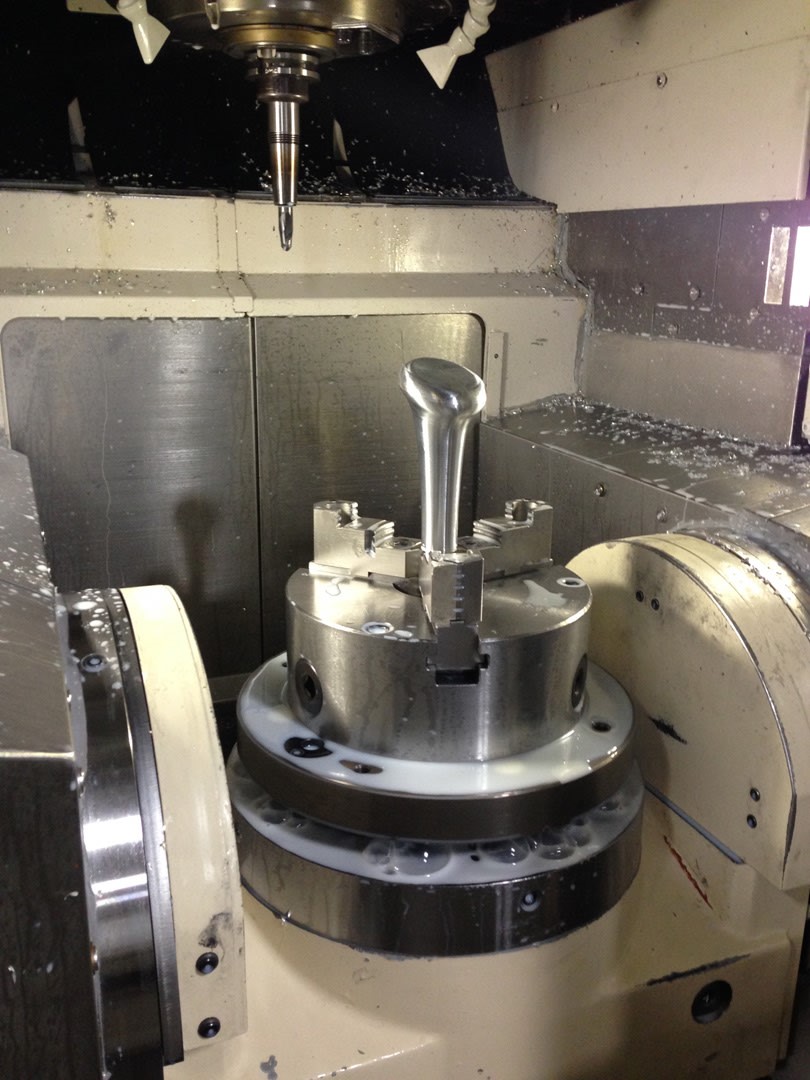
What’s Next for the ProXR?
Phelan has come a long way from making prototypes in his home woodshop. And since patenting the ProXR in 2006, he’s largely been a one-man band. He develops and designs his own products and logos. He manages the ProXR website, runs all social media and content creation, and heads all marketing.
Financially, he started off self-funding, putting well into six figures of his own money into product and business development before accepting small investments from friends and family. In 2020, he and his wife sold their house to cut their personal costs and keep ProXR funded. They also restructured the company in 2020, bringing on new investors and implementing an advisory board—moves that coincided with a partnership with Thirty-5 Capital Partners, a Chicago-based venture capital firm focused on early-stage startups.
The road has been long, the leaps small, and the growth incremental.
“I started at the very bottom with a very, very small bat company that was MLB-certified,” says Phelan. “We made some bats, we got them in the games, and we got people interested to a level where it can be taken seriously. It took us, what, 15 years to get to that point? Now the phone is starting to ring, which is pretty exciting.”
Knowing the struggles of innovation and entrepreneurship, Phelan has also become an unlikely influencer. He gave a presentation on innovation at the University of Kansas Industrial Design School in 2014; and today, he works with young entrepreneurs at Webster Groves High School in Missouri, his alma mater, through a program called THRIVE, where he judges student innovation competitions and mentors youth startups. He’s even hired some of these young entrepreneurs at ProXR to help with product development and social media marketing.
And while Phelan’s focus is still on penetrating the MLB market, he has also developed a portfolio of patents and expanded into other sports. With products targeting baseball, hockey, golf, lacrosse, and even pickleball, ProXR has a potential market size of over 60 million athletes in North America.
“One of the leading injuries in golf is a broken hamate bone,” Phelan says. “Virtually every sport where you swing a stick, your hand has to cross over the central axis, causing that same compression we see when swinging a baseball bat.”
Phelan’s core revenue comes not from manufacturing bats, but from licensing his patented knob to bat makers. Now, he’s developed a product for metal bats called The Switch, an attachment that can equip any metal bat with a ProXR knob, giving youth and NCAA players access to the innovation during the crucial years in which they build their bat and brand loyalty.
“I believe in a grassroots movement where you start with children,” says Lancisi. “And I believe in the ProXR. If you get kids growing up swinging this bat, they’re not going to go to anything else.”
When asked what’s next for ProXR—landing one of the top bat manufacturers, gaining momentum among players, penetrating deeper into other sports—Phelan says his plan is to continue to rely on what’s gotten him here: his core philosophies of innovation, persistence, and unwavering belief.
“It’s super tricky and impossible to predict what’s next,” says Phelan. “But it’s my job to make sure that we’re constantly innovating and putting ourselves in a position where, when that inflection point hits, we’re ready to take advantage of it.”
If more players adopt the ProXR in 2024, he may not have to wait much longer.
A founding editor of The Players’ Tribune, Paul Mueller is a freelance writer and content strategist based in Florida.
(15)

